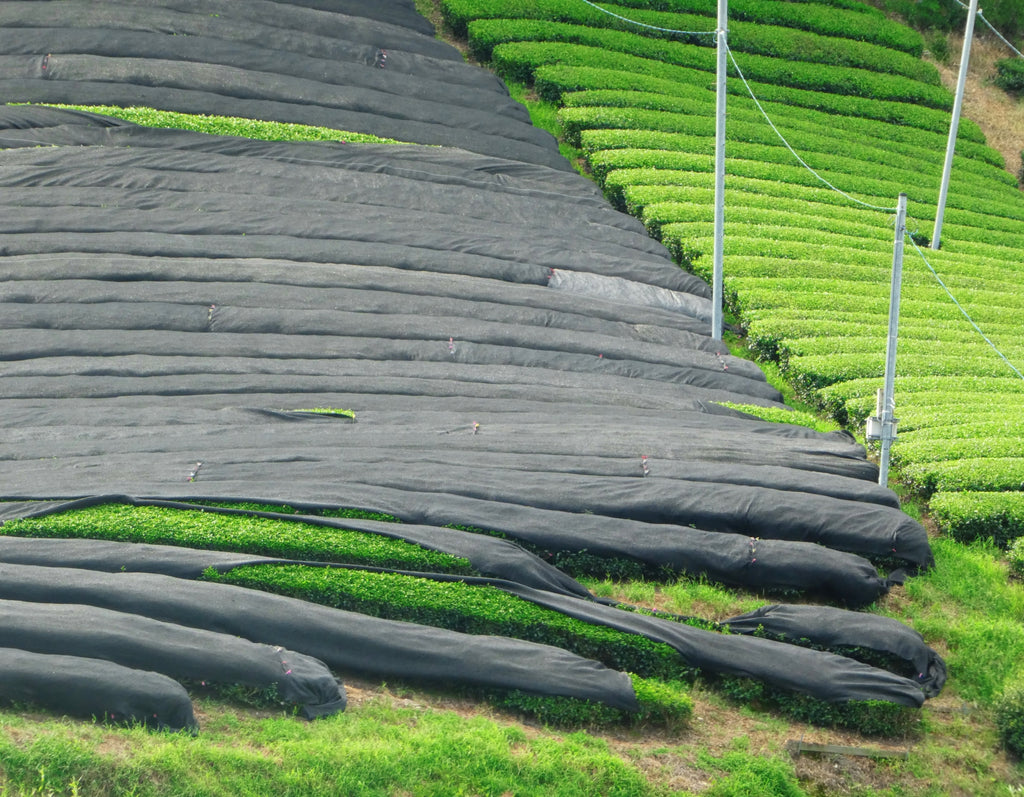Matcha, gyokuro and kabushecha grown in the shade are said to have a fragrance called ooika, covered aroma. “Ooi” means shade and “ka” means aroma in Japanese. This article talks about ooika, , the unique fragrance of Japanese green tea.
1. What is ooika
Ooika, covered aroma is present in teas that are grown in the shade to increase their umami flavor and sweetness. This includes matcha, gyokuro and kabushecha. The shading period of kabusecha is shorter than the other two, so the "ooika" is generally weaker.
Specifically, the ooika is said to be a scent like green seaweed. It is caused by an ingredient called dimethyl sulfide, and indeed, dimethyl sulfide is also the scent that seaweed has. Matcha, gyokuro and kabushecha produce an ooika due to the increase in dimethyl sulfide in the tea leaves when they are shaded to block out the sunlight.
2. Ooika in tea quality evaluation
Ooika is an important factor in sensory test, one of the methods of tea quality evaluation. Sensory test is a method of judging quality using the five human senses.
First of all, the presence or absence of the ooika distinguishes sencha from kabusecha and gyokuro. According to the arrangements of the Japanese Tea Industry Association, uncovered tea is defined as Sencha, gyokuro if it has been shaded for more than 20 days, and kabusecha is defined as shaded tea if it is in between.
However, because of various factors such as the detailed method of shading, fertilization, location of the tea farm, and the approach taken by farmer, the number of days of shading does not necessarily determine that the tea is "typical of kabusecha" or "typical of gyokuro". On the other hand, even unshaded sencha can have a "ooika" due to the shadows of other trees and mountains blocking the sunlight.
In order to adjust these variables, tea wholesalers mainly judge the subtle differences between teas with different ooika and perform blending called gogumi. This is how the final products, sencha, kabushecha and gyokuro, are made.
Some stores have several types of products in their kabushecha or gyokuro lineups. When making these lineups, they classify the gyokuro and kabusecha based on the difference of each ooika. Specifically, the ooika has usually a strong aroma of dried seaweed. And higher level of ooika further contains fruity and fresh profile.
For matcha, it has the longest shading period of all Japanese teas, so the majority of the aroma it has must be ooika, otherwise it may not be adequately shaded. For example, matcha that has the aroma specific to its cultivar may not be adequately shaded, since in general, the stronger the ooika of matcha, the cultivar specific aroma should disappear. (Of course, there are some matcha that are well shaded but still offer a cultivar specific aroma.)
Ooika does not simply mean an aroma of seaweed, but you can enjoy variety of ooika depending on the tea types or qualities.

